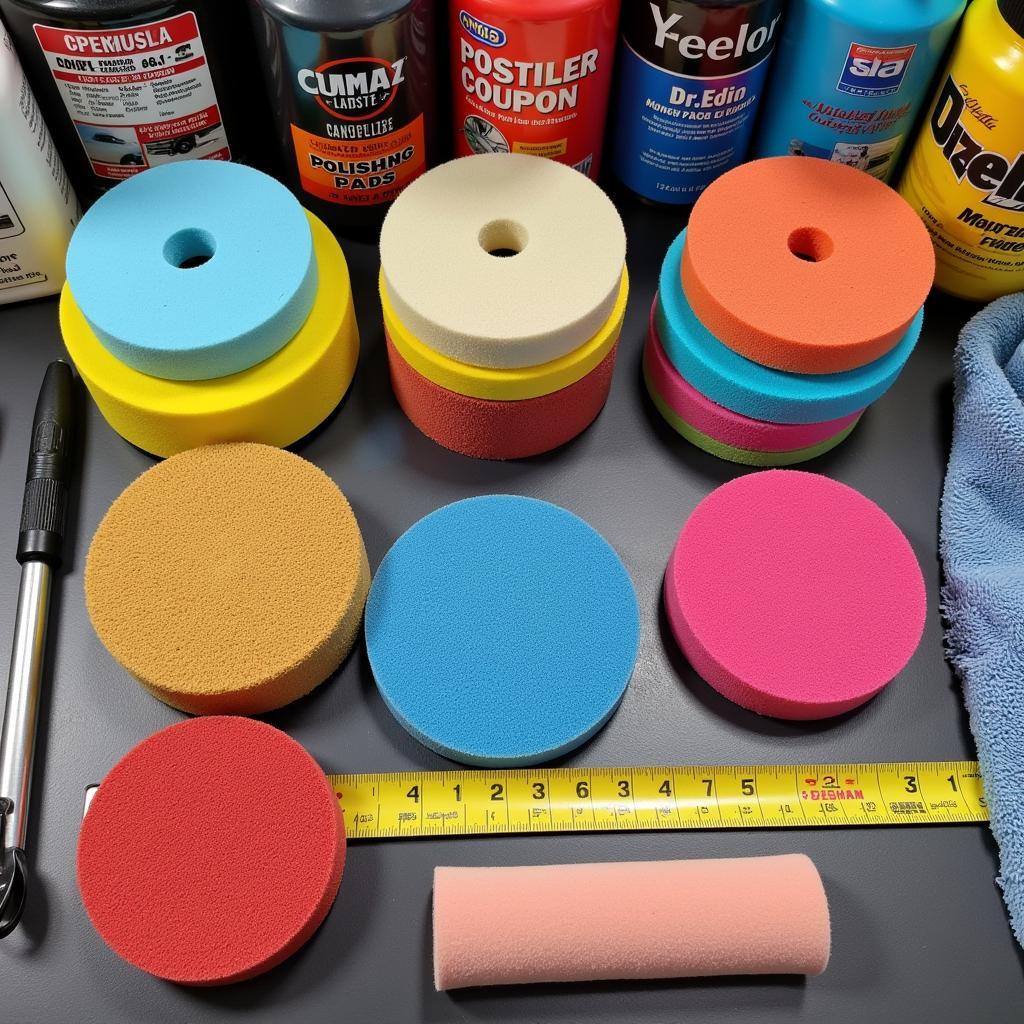Finding the Best Polisher For Car Detailing can be a game-changer. Whether you’re a seasoned professional or a weekend warrior, the right polisher can transform your detailing routine from a chore to a pleasure, delivering stunning results and saving you valuable time. This guide will delve into the world of car polishers, helping you choose the perfect tool to achieve a showroom-worthy finish.
Choosing the right car polisher is crucial for achieving a flawless finish. We’ll explore the various types of polishers, their pros and cons, and key features to consider. From rotary polishers to dual-action and random orbital polishers, we’ll break down the essential information you need to make an informed decision. This knowledge will empower you to select the best polisher for car detailing, whether you’re removing swirl marks, correcting paint defects, or applying a final wax. Ready to elevate your detailing game? Let’s dive in.
Types of Car Polishers: Decoding the Options
There are several types of car polishers available, each with its own strengths and weaknesses. Understanding these distinctions is key to finding the best polisher for your specific needs.
Rotary Polishers: The Powerhouses
Rotary polishers are the original and most powerful type of polisher. They offer aggressive cutting power, making them ideal for removing heavy scratches and defects. However, their high speed and direct drive require a skilled hand to avoid burning the paint. For the novice, they can be quite daunting.
Dual-Action Polishers: The Versatile Choice
Dual-action polishers, often referred to as DA polishers, offer a balance of power and safety. They combine a rotating spindle with an oscillating head, creating a less aggressive action that minimizes the risk of paint damage. This makes them a popular choice for both beginners and experienced detailers. Check out our guide on the best orbital polisher for car detailing for more information.
Random Orbital Polishers: The Beginner-Friendly Option
Random orbital polishers, sometimes called RO polishers, are the safest and easiest type of polisher to use. Their random orbiting motion virtually eliminates the risk of burning the paint, making them perfect for beginners. While they may not be as powerful as rotary or DA polishers, they still deliver excellent results for light to moderate paint correction and polishing. If you’re just starting out, our guide on the best buffer polisher for amateur car detailing might be helpful.
Key Features to Consider: Finding the Perfect Fit
Beyond the type of polisher, several other features can influence your decision. Consider these factors to find the best polisher for car detailing that aligns with your needs and budget.
- Speed Settings: Variable speed settings allow you to adjust the polisher’s speed to suit the task at hand.
- Pad Size: Different pad sizes are available for different areas of the car. Smaller pads are ideal for tight spots, while larger pads cover more ground.
- Weight and Ergonomics: A comfortable grip and balanced weight are crucial for extended detailing sessions.
- Power Cord Length: A longer power cord provides greater reach and maneuverability.
- Price: Polishers range in price from budget-friendly to high-end. Set a budget before you start shopping.
 Comparing Different Polisher Pads
Comparing Different Polisher Pads
What is the best buffer polisher for car detailing?
The “best” buffer polisher depends on your skill level and the type of detailing you’ll be doing. Dual-action polishers are generally a great all-around choice. For more specific recommendations, check out our guide on car detailing best polisher.
Why is choosing the correct polisher important?
Using the wrong type of polisher can lead to paint damage, swirl marks, and uneven results. Selecting the correct polisher for your skill level and the task at hand ensures optimal results and protects your car’s finish. If you are unsure, perhaps you’d be interested in the best buffer polisher for amature car detailing.
Conclusion: Achieving a Showroom Shine
Finding the best polisher for car detailing is an investment in the appearance and longevity of your vehicle. By understanding the different types of polishers, their features, and your own detailing needs, you can make an informed decision that will empower you to achieve professional-level results.
FAQ
- What is the difference between a rotary and a dual-action polisher?
- Which type of polisher is best for beginners?
- What size polishing pad should I use?
- How often should I polish my car?
- What are the best polishing compounds to use?
- How do I maintain my car polisher?
- What safety precautions should I take when using a car polisher?
For any assistance or inquiries, please contact us via WhatsApp: +1(641)206-8880, or Email: [email protected]. Our customer service team is available 24/7.

Leave a Reply